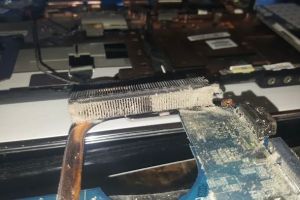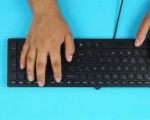How to Fix a Damaged USB Bootable Drive: Quick and Effective Solutions
- Understanding Why Your USB Bootable Drive Might Get Damaged
- Common Causes of USB Bootable Drive Damage
- How to Repair a Damaged USB Bootable Drive
- Preventive Tips to Avoid Future USB Bootable Drive Damage
Understanding Why Your USB Bootable Drive Might Get Damaged
USB bootable drives are essential tools for many tasks such as installing operating systems, running diagnostics, and troubleshooting computers. However, just like any electronic device, USB bootable drives are susceptible to damage over time. The damage could be due to hardware failure, software corruption, or user error.
When your USB bootable drive becomes damaged, it can result in an inability to boot from the device or an error message when you try to use it. In many cases, it’s possible to fix the issue without needing to replace the drive. In this article, we will walk through the reasons behind USB bootable drive damage and how to fix it effectively.
Common Causes of USB Bootable Drive Damage
There are several reasons why a USB bootable drive might become damaged. Understanding these causes can help prevent future issues and guide you in fixing your drive effectively:

PC Solutions
6245 N 35th Ave #6, Phoenix, AZ 85017, USA
1. Improper Ejection
One of the most common causes of USB drive damage is improper ejection. When you remove a USB drive without safely ejecting it from your system, it may cause file corruption, rendering the drive unusable. Always ensure that you eject the drive safely before physically removing it from the USB port.

Best Buy
4210 Centerplace Dr, Greeley, CO 80634, USA
2. Physical Damage
Physical damage to the USB drive can occur if it’s dropped, bent, or exposed to extreme temperatures. This can cause internal components to break or malfunction, making it difficult for the drive to function properly.
3. Corrupted File System
If the file system of the USB bootable drive becomes corrupted, it can prevent the device from booting. This is often caused by improper shutdowns, viruses, or software errors. In many cases, file system corruption can be repaired using disk repair utilities.
4. Overwriting Boot Files
Sometimes, the bootable drive becomes unusable when files or partitions meant for booting are overwritten with non-bootable data. This can happen if you accidentally format the drive or copy non-bootable files onto it.
How to Repair a Damaged USB Bootable Drive
If you find that your USB bootable drive is damaged, there are several repair methods you can try before resorting to a new device. Here’s how you can fix it:
1. Check the USB Port
Before assuming that the USB drive is damaged, make sure the issue isn’t with the USB port itself. Try plugging the bootable drive into another port or a different computer. If the drive works in a different port, then the issue lies with the original USB port.
2. Repair the File System Using CHKDSK
If your drive is not readable, the file system may be corrupted. Windows users can use the built-in CHKDSK (Check Disk) utility to scan and repair the file system. Open Command Prompt and type the command: chkdsk /f X: (replace X with the drive letter of your USB). This will fix common errors on the drive.
3. Rebuild the Boot Sector
If your USB drive is bootable but isn’t working, it might be due to a damaged boot sector. You can use the Windows Recovery Environment (WinRE) or a third-party tool to rebuild the boot sector and restore the drive’s ability to boot the operating system.
4. Use Diskpart to Clean the Drive
If other methods fail, you can use the Diskpart utility in Windows to clean and reformat the drive. Type the following commands in Command Prompt:
1. Type diskpart and press Enter.
2. Type list disk to find your USB drive.
3. Type select disk X (replace X with your USB disk number).
4. Type clean to erase the drive and prepare it for reformatting.
This will wipe all data, so be sure to back up any important files before proceeding.
5. Recreate the Bootable Drive
After cleaning the drive, you can recreate the bootable drive using software like Rufus or the Windows Media Creation Tool. Simply download the software, select your USB drive, and choose the operating system you want to install on the drive.
Preventive Tips to Avoid Future USB Bootable Drive Damage
While fixing a damaged USB bootable drive is often possible, it’s always better to prevent damage from happening in the first place. Here are some helpful tips:
1. Always Safely Eject Your USB Drive
As mentioned earlier, improper ejection is one of the main causes of USB damage. Always use the "safely eject" option in your system before unplugging the drive.
2. Keep the Drive Protected from Physical Damage
Store your USB bootable drive in a safe, dry place to protect it from physical damage. Consider using a protective case or cover to prevent it from being scratched, dropped, or bent.
3. Backup Your Data Regularly
Keep backups of any important files or bootable data stored on your USB drive. This way, even if the drive becomes damaged, you can easily recover your data without worrying about losing it permanently.
4. Use Reliable Software for Creating Bootable Drives
Ensure that you’re using trusted software for creating bootable drives. Using reliable programs will help reduce the risk of file system corruption or incomplete bootable file creation.





























